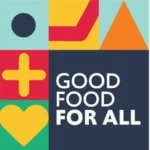Pillar 4: Good food is vulnerable to disruption
Good food is vulnerable to disruption. From climate and conflict. It is in jeopardy every day, when violence starts and peace is threatened, when ocean levels rise and rain does not fall, when democracy fails and power shifts – good food is threatened.
Affecting almost all aspects of food systems, armed conflicts directly and indirectly impact people’s ability to access food. Its direct impacts hit rural communities the hardest with the destruction of land, crops or agriculture infrastructure, the confiscation of resources, and the displacement of people from arable land. These factors cause disruption to future planting and harvesting seasons, bringing local food production to a halt. Indirectly, conflicts can cause deep economic recessions, leading to a downward spiral of increasing poverty and reduced access to food. The loss of social safety nets, disrupted livelihoods and imports, and rise in food prices all reduce the availability and a household’s access to affordable food.
With a twofold increase in extreme climate-related disasters since the early 1990s, the climate emergency poses multiple challenges to delivering good food for all. Climate disasters negatively impact food production, thereby contributing to food shortages including knock-on effects of food price hikes and income losses that reduce access to food. Where food does grow, climate change is negatively impacting the nutrient quality of crops. Unseasonal, heavy rains have created the right breeding conditions for desert locust swarms to develop, now destroying crops across three continents: from East Africa and South Asia to South America.
Economic shocks are a third key disruptor of food.
Where economies slow down or contract, people face increased difficulties in accessing affordable nutritious food,
due to a rise in unemployment, a loss of wages and incomes, and increase in food prices. Agriculture in low-income countries is particularly affected, as economic slowdowns often trigger a fall in demand for agriculture production that then impacts livelihoods and farmers’ ability to afford diverse, nutritious diets. To cope, low-income households often shift from eating a variety of high-quality foods to a few cheaper, less-diverse foods.
It’s important to note that conflict, climate and economic disruptions often coexist within the same context.
Economic shocks reduce a household’s resilience to climate shocks and exacerbate political tensions. Additionally, climate disasters create economic fragility and exacerbate conflict. Economic slowdowns and downturns can also be caused by conflict or climate shocks.







